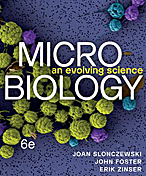Bacillus cereus F: Difference between revisions
No edit summary |
|||
| Line 45: | Line 45: | ||
==References== | ==References== | ||
Bottone E. J. (2010). Bacillus cereus, a volatile human pathogen. Clinical microbiology reviews, 23(2), 382–398. https://doi.org/10.1128/CMR.00073-09 | |||
Brenner, E. V., Brouchkov, A. V., Kurilshikov, A. M., Griva, G. I., Kashuba, E., Kashuba, V. I., Melefors, O., Repin, V. E., Melnikov, V. P., & Vlassov, V. V. (2013). Draft Genome Sequence of Bacillus cereus Strain F, Isolated from Ancient Permafrost. Genome announcements, 1(4), https://doi.org/10.1128/genomeA.00561-13 | |||
Evgeniy V. Brenner, Anatoli V. Brouchkov, Alexander M. Kurilshikov, Gennady I. Griva, Elena Kashuba, Vladimir I. Kashuba, O. Melefors, Vladimir E. Repin, Vladimir P. Melnikov, Valentin V. Vlassov. (2013) Draft Genome Sequence of Bacillus cereus Strain F, Isolated from Ancient Permafrost. American Society for Microbiology. 1(4). https://doi.org/10.1128/genomea.00561-13 | |||
Jensen, G.B., Hansen, B.M., Eilenberg, J. and Mahillon, J. (2003), The hidden lifestyles of Bacillus cereus and relatives. Environmental Microbiology, 5: 631-640. https://doi.org/10.1046/j.1462-2920.2003.00461 | |||
==Author== | ==Author== | ||
Revision as of 18:48, 29 November 2023
Classification
Domain; Bacteria. Phylum; Firmicutes. Class; Bacilli. Order; Bacillales. family; Bacillaceae
Species
|
NCBI: [1] |
https://www.ncbi.nlm.nih.gov/Taxonomy/Browser/wwwtax.cgi?mode=Info&id=1126681&lvl=3&lin=f&keep=1&srchmode=1&unlock
Bacillus cereus F
Description and Significance
Bacillus cereus F is a strain related to the widely known Bacillus cereus species. This is a gram positive, rod shaped, spore forming species and usually aerobic or facultatively anaerobic. This strain of the organism is important because of its surprising location when found and its presumed age. The viable strain 'F' of Bacillus cereus was found in the permafrost of the Mammoth Mountain in Siberia and is aged to be a bout 3 million years old. This is a great example to be studied for low-temperature adaptations.
Genome Structure
The genome of B. cereus F is not yet fully understood, but its close family member, Bacillus cereus, has a genome comprised of a single circular chromosome consisting of 5,221,581 bp. It has a nucleotide sequence of 398,050.
Cell Structure, Metabolism and Life Cycle
Bacillus cereus F is a gram positive and rod-shaped microbe. It is anaerobic and spore forming. This bacterium produces toxins that can cause vomiting symptoms if ingested. These toxins are include: hemolysins, phospholipases and pore-forming enterotoxins.
Ecology and Pathogenesis
Bacillus cereus grows optimally in 45 degree celsius, while Bacillus cereus F was found in 3 million year old permafrost of -3 degrees celsius. Although the organism can form spores, this is still an interesting discovery and could potentially give insight into survival of the extreme cold and age. Bacillus cereus lives as a symbiotic companion in the invertebrate gut of many hosts, but in some host cause pathogens, due to its production of toxins and ability to produce in large amounts. These toxins cause symptoms including vomiting and diarrhea.
References
Bottone E. J. (2010). Bacillus cereus, a volatile human pathogen. Clinical microbiology reviews, 23(2), 382–398. https://doi.org/10.1128/CMR.00073-09
Brenner, E. V., Brouchkov, A. V., Kurilshikov, A. M., Griva, G. I., Kashuba, E., Kashuba, V. I., Melefors, O., Repin, V. E., Melnikov, V. P., & Vlassov, V. V. (2013). Draft Genome Sequence of Bacillus cereus Strain F, Isolated from Ancient Permafrost. Genome announcements, 1(4), https://doi.org/10.1128/genomeA.00561-13
Evgeniy V. Brenner, Anatoli V. Brouchkov, Alexander M. Kurilshikov, Gennady I. Griva, Elena Kashuba, Vladimir I. Kashuba, O. Melefors, Vladimir E. Repin, Vladimir P. Melnikov, Valentin V. Vlassov. (2013) Draft Genome Sequence of Bacillus cereus Strain F, Isolated from Ancient Permafrost. American Society for Microbiology. 1(4). https://doi.org/10.1128/genomea.00561-13
Jensen, G.B., Hansen, B.M., Eilenberg, J. and Mahillon, J. (2003), The hidden lifestyles of Bacillus cereus and relatives. Environmental Microbiology, 5: 631-640. https://doi.org/10.1046/j.1462-2920.2003.00461
Author
Page authored by Aidan Suchniak, student of Prof. Bradley Tolar at UNC Wilmington.

